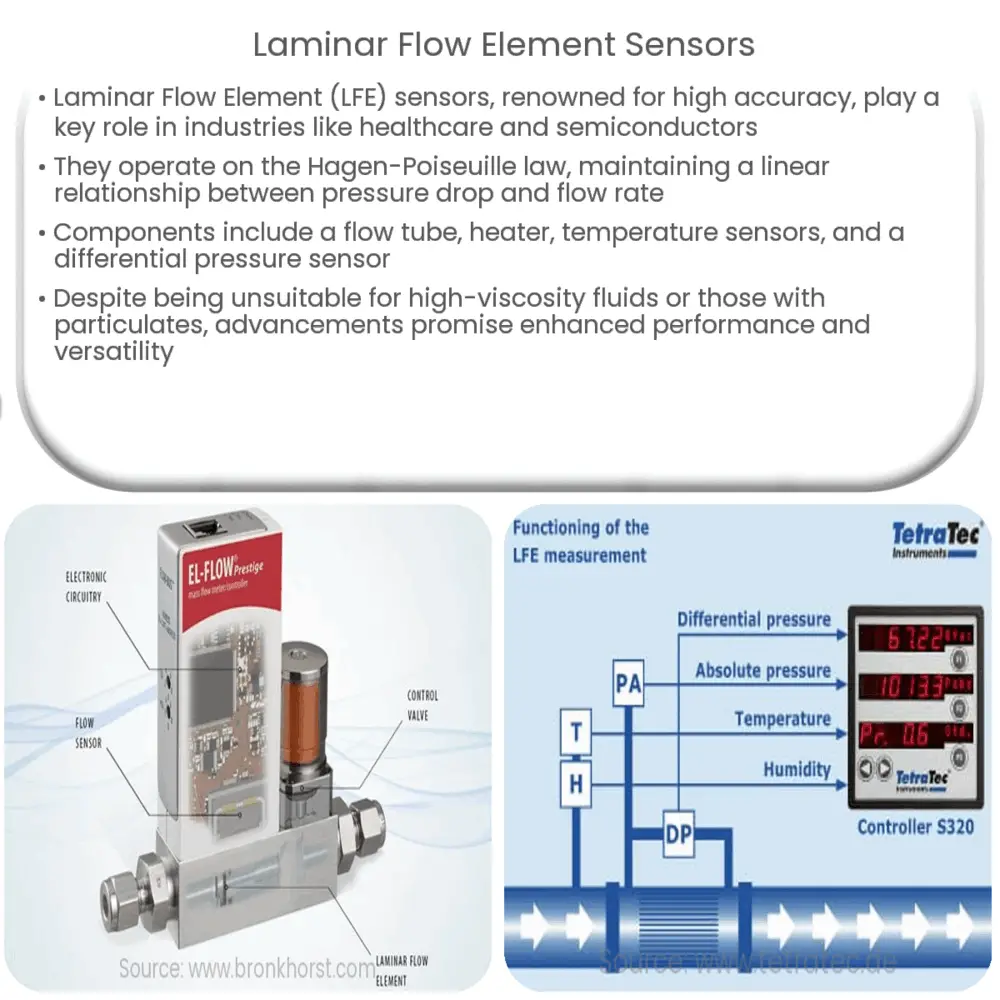Explore the principles, applications, advantages, and future perspectives of Laminar Flow Element Sensors in various industries.

Laminar Flow Element Sensors: An Overview
Laminar flow element (LFE) sensors play a pivotal role in a variety of industries, particularly in the realm of gas flow measurement. They are renowned for their high accuracy, repeatability, and linearity over a wide range of flow rates.
Working Principle of Laminar Flow Element Sensors
The fundamental principle behind LFE sensors is the Hagen-Poiseuille law, a physics principle that explains the behavior of fluid flow under certain conditions. The law implies that the flow rate of a fluid passing through a long cylindrical pipe is directly proportional to the fourth power of the radius and the pressure difference at the ends, while it’s inversely proportional to the fluid’s viscosity and the length of the pipe. Thus, by creating a precisely controlled environment, LFE sensors can ensure a linear relationship between pressure drop and flow rate, yielding highly accurate measurements.
Key Components of Laminar Flow Element Sensors
- Flow Tube: The flow tube is a vital component of the LFE sensor, ensuring the flow of gas remains laminar. Its design is critical, as it must provide a steady, linear flow of gas through the sensor.
- Heater and Temperature Sensors: These elements are responsible for creating and measuring a thermal gradient across the sensor. As gas flows through the sensor, it carries heat away, and the temperature sensors can quantify this, translating it into a flow rate measurement.
- Differential Pressure Sensor: This part measures the pressure drop across the laminar flow element, offering an additional method to calculate flow rate.
Applications of Laminar Flow Element Sensors
LFE sensors find usage in various sectors due to their remarkable precision and versatility. They’re frequently found in medical devices like ventilators and anesthesia delivery systems, where precise flow control is critical. In the semiconductor industry, they monitor and control process gases to ensure the quality and efficiency of chip manufacturing. Additionally, LFE sensors play a crucial role in HVAC systems, where they maintain and regulate airflow to provide optimal indoor air quality and thermal comfort.
Advantages and Limitations of Laminar Flow Element Sensors
Laminar Flow Element Sensors offer several advantages that make them a preferred choice for numerous applications. Firstly, they provide exceptional accuracy and repeatability, offering reliable readings over time. Secondly, LFE sensors are largely insensitive to gas composition changes, hence maintaining their accuracy even when the type of gas being measured varies. Thirdly, they have a high turndown ratio, meaning they can measure a wide range of flow rates with the same degree of accuracy.
Despite their many benefits, it’s important to acknowledge the limitations of LFE sensors. Primarily, they are not suitable for fluids with high viscosities or those that may contain particulates, as these conditions can disrupt the laminar flow. Moreover, they require careful calibration and can be sensitive to temperature and pressure variations.
Future Perspectives
The future of Laminar Flow Element Sensors looks promising, with technological advancements poised to enhance their performance and versatility. Novel materials and manufacturing techniques could lead to smaller, more efficient sensors. Concurrently, advancements in electronics and software will likely provide improved calibration, signal processing, and connectivity, thus expanding the potential applications of these devices.
Conclusion
In conclusion, Laminar Flow Element Sensors are a vital tool in numerous industries owing to their accuracy, reliability, and versatility. Despite some limitations, their advantages far outweigh their drawbacks, making them a preferred choice for precise fluid flow measurements. The continuous evolution in technology suggests a bright future for these devices, and we can expect to see even more innovative applications and improvements in the years to come.



